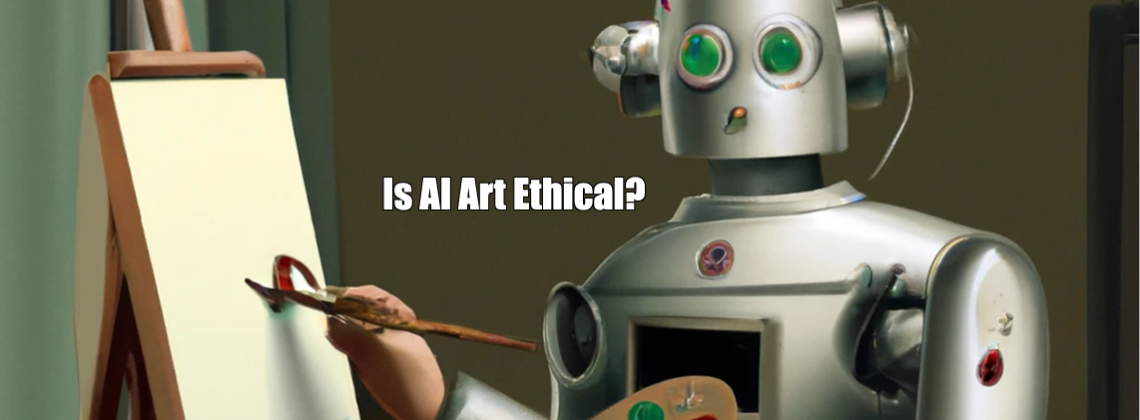
Is AI Art Ethical?
Summary
Pros
- Innovation and Creativity: AI art introduces new techniques and perspectives, expanding the boundaries of artistic expression.
- Accessibility: AI tools can democratize art creation, making it accessible to individuals without formal training.
- Collaboration: Offers a novel form of collaboration between human and machine, potentially leading to unprecedented creative outcomes.
Cons
- Copyright Infringement: Potential to use existing artworks without proper attribution or compensation, raising legal and ethical concerns.
- Loss of Human Touch: May devalue the unique emotional and experiential aspects that human artists bring to their work.
- Bias and Representation: AI algorithms can perpetuate biases present in their training data, leading to skewed or insensitive representations.
The ethics of AI art hinge on its use and implications. When AI serves as a tool augmenting human creativity, respecting copyright, and fostering innovation, it can be seen as ethical. However, issues arise around originality, intellectual property, and potential biases in AI-generated works. Ethically deploying AI in art requires transparency, fairness, and respect for human creators.
The debate centers not on the technology itself but on how it is applied and integrated into the art world. Thus, AI art’s ethical standing is conditional, relying on mindful practices that honor artistic integrity and societal norms.
The emergence of artificial intelligence (AI) in the realm of art creation has sparked a wide-ranging debate over its ethical implications. As AI-driven tools become increasingly sophisticated, capable of generating artworks that rival those produced by human hands, questions surrounding originality, copyright, and the moral responsibilities of creators and users have become more pressing.
In this discussion, we will explore various facets of the debate, considering whether AI art can be deemed ethical, and under what conditions it might cross into unethical territory.
The Ethical Landscape of AI Art
At the heart of the ethical discussion on AI art lies the question of originality and creativity. Critics argue that AI, lacking consciousness and subjective experiences, cannot truly create art in the same way humans do. Art, in the traditional sense, is seen as an expression of the human condition, reflecting our deepest emotions, thoughts, and experiences.
From this perspective, AI art might be seen as lacking the intrinsic value that comes from the human creative process, raising questions about its authenticity and ethical standing.
However, proponents of AI art counter that the tool itself is merely an extension of human creativity. They argue that the ethical use of AI in art hinges on how it is employed by artists. If AI is used as a tool to explore new artistic frontiers, enhance human creativity, and bring to life visions that were previously unattainable, then AI art can indeed be considered ethical. In this light, AI becomes a collaborator rather than a substitute for human creativity, expanding the possibilities of what can be achieved through art.
Copyright and Intellectual Property Concerns
Another critical aspect of the ethical debate surrounding AI art revolves around copyright and intellectual property rights. AI art generators often rely on vast datasets of existing artworks to learn and create new pieces. This raises significant ethical concerns regarding the originality of AI-generated works and the potential infringement on the rights of human artists whose works contributed to training these models.
To navigate these ethical waters, it is crucial to establish clear guidelines and legal frameworks that respect the contributions of both human artists and AI developers. Transparent attribution of sources, equitable sharing of benefits, and the recognition of the collaborative nature of AI-generated art could form the basis of an ethical approach to copyright in the AI art world.
Moral Considerations and Societal Impact
The ethical examination of AI art also extends to its moral implications and impact on society. One concern is the potential for AI art to perpetuate biases present in its training data, thereby reinforcing harmful stereotypes or misrepresenting cultures and communities. Ethically deploying AI art requires vigilance in curating training datasets and the implementation of mechanisms to detect and correct bias.
Furthermore, the widespread adoption of AI in art raises concerns about the devaluation of human artistry and the economic implications for artists. There is a moral obligation to consider how AI art can coexist with human-created art without diminishing the value and livelihood of artists. Ethical AI art practices should strive to complement and enrich the human art experience rather than replace it.
Towards an Ethical Framework for AI Art
Developing an ethical framework for AI art involves balancing innovation with respect for human creativity, copyright laws, and the broader societal impact. Key components of such a framework could include:
- Transparency: Clearly disclosing the use of AI in the creation of art and the sources of training data.
- Fairness: Implementing measures to ensure that AI does not perpetuate biases or unfair representations.
- Respect for Intellectual Property: Establishing guidelines for copyright compliance and fair compensation for artists whose works contribute to AI training datasets.
- Collaboration: Encouraging the view of AI as a tool for enhancing human creativity rather than a replacement.
Also read: Is Apple Ethical? Debunking Common Myths & Misconceptions
Conclusion
The question of whether AI art is ethical is multifaceted, touching on issues of creativity, copyright, and the moral obligations of creators and users. While AI art presents challenges to traditional notions of artistry and ownership, it also offers unprecedented opportunities for creative exploration and expression.
By adopting an ethical approach that respects human creativity, addresses copyright concerns, and mitigates societal impacts, AI art can be embraced as a valuable addition to the artistic landscape. In essence, the ethical status of AI art is not inherent but is determined by how we choose to integrate these technologies into our cultural practices and legal systems.
As we navigate this new terrain, the ongoing dialogue between artists, technologists, legal experts, and the public will be crucial in shaping a world where AI art is created and enjoyed ethically.

